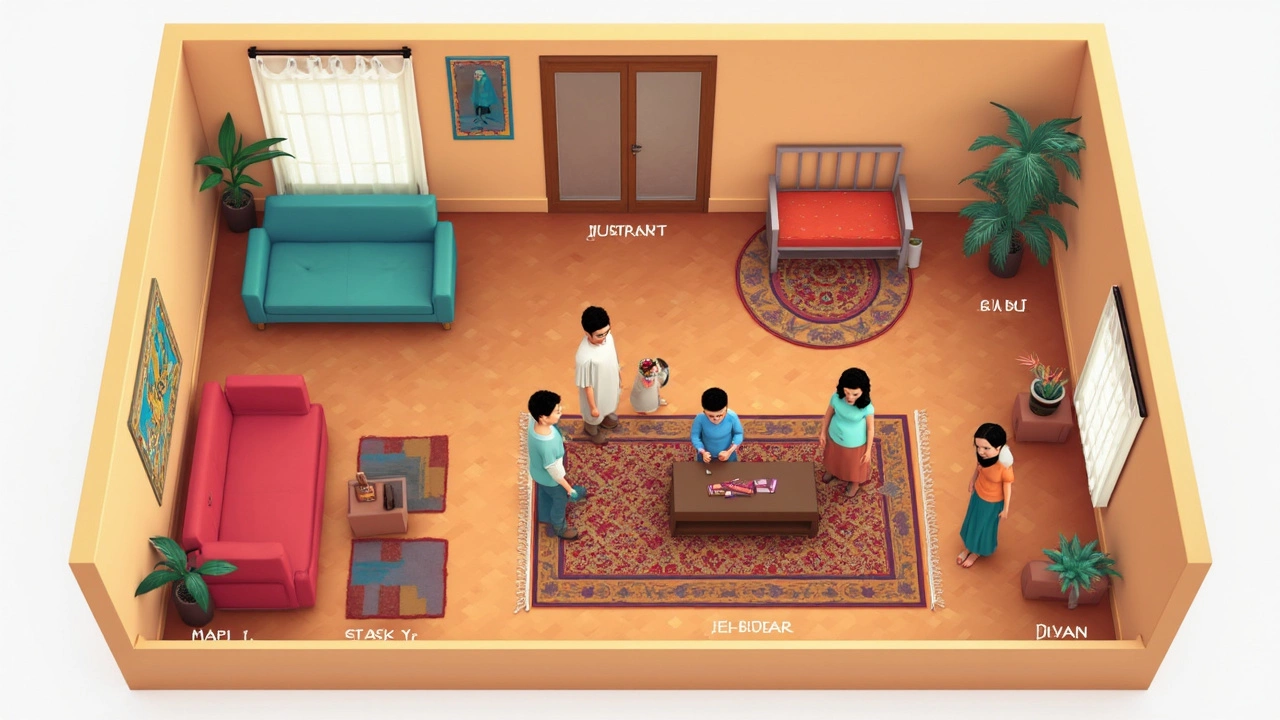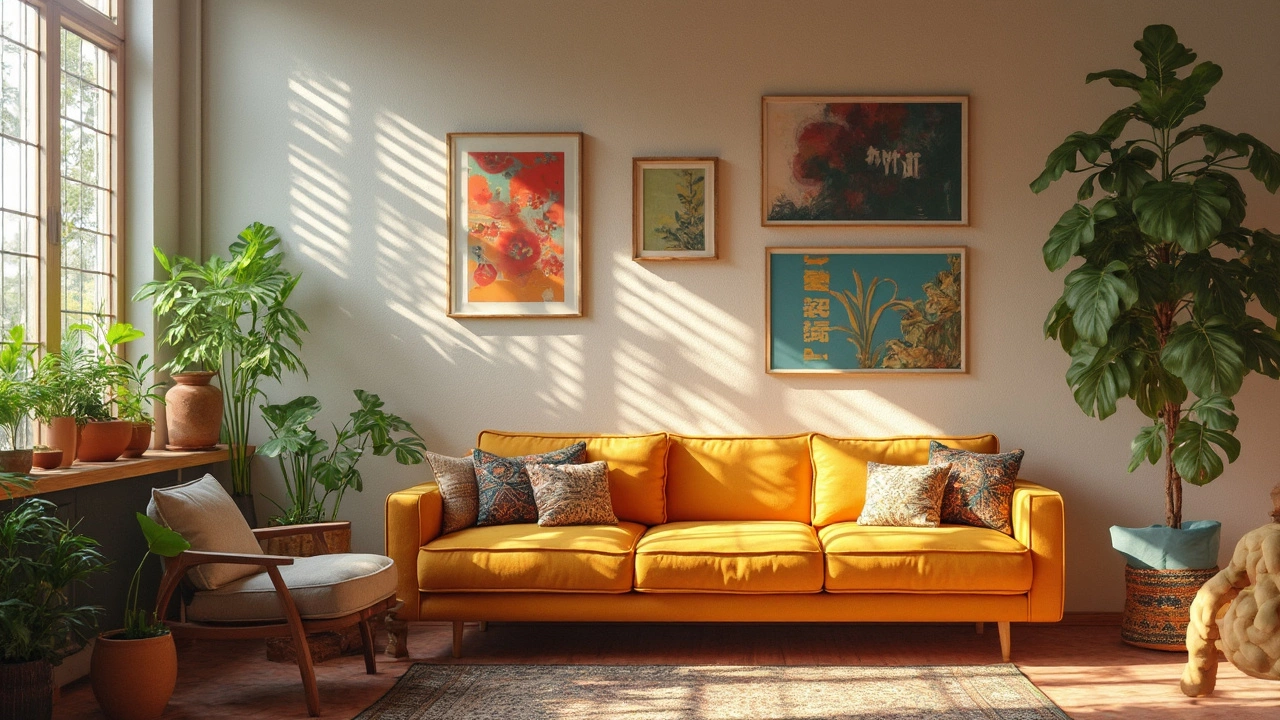Ever tried fitting a full-sized couch into a tiny flat and ended up feeling like you've just installed a bouncy castle in your living room? Yeah, it's a puzzle. People live in all sorts of spaces: classic studio flats, narrow terrace houses, shared student digs. The demand for smaller, more efficient furniture is sky-high—especially here in Oxford where most rooms feel like a polite apology from your letting agent. But what do you call that pint-sized sofa that fits perfectly into awkward corners? Is it a loveseat? A settee? A two-seater? The answer isn’t as obvious as you’d think, and the terms get thrown around in ways that would make even IKEA designers raise their eyebrows.
The World of Tiny Sofas: Names, Origins, and What Sets Them Apart
Let’s cut straight to the chase: the most common name for a very small sofa is "loveseat." But it's not the only term you’ll bump into. Depending on who you ask—your gran, your mate down the pub, or a fancy showroom assistant—you might also hear “settee,” “apartment sofa,” “snuggler,” or just “two-seater.” Very small sofa covers a whole family of squashed but stylish seating, but distinctions matter if you’re furniture shopping or trying to impress during a pub quiz.
Loveseats are the clear leader. The term pops up most in North America but has grown globally. Loveseats typically measure between 48 and 66 inches wide. They make a statement: meant for two (or a solo lounger who really likes to sprawl). The origins date back to 17th-century France when love seats were actual status symbols, made for posh ladies to perch on with massive dresses. Think Regency romance, not binge-watching reality TV.
Settee—it's an old-school British term. My grandmother once corrected me at a family tea and trust me, you don’t forget a lesson like that. While “settee” and “sofa” can be interchangeable, settee usually refers to a lighter or smaller frame, sometimes with exposed wood. You’ll find it in period dramas or your favourite heritage B&B, but home brands are reviving the name for trendier models too.
Snugglers and cuddler sofas have arrived for people who want something between a full armchair and a loveseat. They’re wider than your average chair but still narrower than a true two-seater. “Apartment sofa” is the term modern retailers like to use to avoid the old-fashioned feel—typically for any compact sofa under 72 inches. Styles cross borders: the Japanese make clever two-seaters with built-in storage, for instance, while Scandinavians go for sleek, minimalist ones that double as beds (blame it on small city flats in Oslo and Helsinki).
Here’s a quick reference for common terms and sizes:
| Type | Average Width (inches) | Main Use |
|---|---|---|
| Loveseat | 48-66 | Seating for two, compact rooms |
| Snuggler/Cuddler | 40-60 | Cozy single or snug couple |
| Apartment Sofa/Small Sofa | 60-72 | Small living rooms, studio flats |
| Settee | 40-70 | Classic or decorative seating |
The upshot? No matter what you call it, size matters more than the name—so know your measurements before falling for a charming label.
Why Small Sofas Are on the Rise: Urban Living Facts and Figures
The rise of small sofas isn’t just about fashion or the cute factor. Globally, homes are shrinking. According to the UK Ministry of Housing, new flats in England average just 46 square metres (that’s about 495 square feet for any American friends reading). In London and Oxford, finding a roomy living area is about as likely as getting a central parking spot. So, furniture makers have responded with more compact, space-efficient pieces.
Here’s a fun fact: IKEA, which sells more sofas than any other retailer worldwide, found in a 2023 customer survey that more than 60% of their UK and European sofa sales were models under 80 inches wide. Urban young professionals, downsizing retirees, students, and remote workers are choosing lightweight, easy-to-move sofas. And who wants to haul a massive, unwieldy beast up three flights of creaky stairs? Gareth once helped our neighbour move an eight-foot monster—it was a two-hour saga involving tears, biscuits, and a lot of creative language.
The small sofa isn’t just about squeezing into the room. It also creates flexibility in layout. Got an open-plan kitchen? Put a loveseat by your window for a mini reading nook. Having family over? Pair two snugglers instead of a giant sofa that swallows guests. Minimalism, Japanese folding furniture trends, and the rise of micro-apartments have all played a part. People want pieces that do double-duty: storage underneath, convertible into beds, or modular enough to shape-shift with their needs.
It’s also about cost. On average, a small sofa costs 10-20% less than a full three-seater. Lower price means you can invest in better fabrics (velvet has made a roaring comeback for compact sofas), or treat yourself to that posh scatter cushion you’ve been eyeing. And if you rent? It’s easier to take with you, or sell on. More brands offer “flat-pack” or easily assembled designs too, so you’re not stuck booking a delivery slot for half your annual leave. Brands like West Elm, Made.com, and John Lewis have seen huge upticks in their “apartment sofa” ranges in the last five years.
So small sofas are everywhere because our lives—and our homes—are changing. They make sense for pockets, backs, and rental contracts alike.

Choosing the Right Very Small Sofa: What to Look For, Avoid, and Love
So, you’re sold on the idea of a tiny sofa, but how do you pick the one that won’t make you regret every sitcom binge? It starts with honest measuring. Sketch out your lounge, and get exact room dimensions—the rule is to leave at least 18 inches from the sofa to the wall, so you don’t feel like you’re wedged in an airlock.
The next thing: check sofa depth. Small sofas can sometimes be wide enough, but if they’re too shallow, adults with longer legs will find them less comfortable. Look for seats with at least 20 inches in depth for lounging. For storage, some models offer lift-up seats—perfect for hiding unsightly throws or board games (or, if you’re like Gareth, an entire collection of takeaway menus).
- Frame: Hardwood frames hold up longer—avoid particleboard if you want your loveseat to survive more than a couple of house moves.
- Fabric: Washable, hard-wearing covers are your friend. Especially if you’ve got pets, kids, or a fondness for red wine.
- Cushions: Foam blends are comfy and bouncy, but feather fills add a plush luxury. Just know feathers need regular plumping, or they get sad and deflated.
- Leg style: Exposed legs create a sense of space—perfect for small rooms—while a skirted base works well if you want to hide storage underneath.
Colour can shift the feel of your whole room, too. Sofas in pale colours or neutrals visually expand tight spaces, while jewel tones give an intense pop. If you’re scared of commitment, slipcovers (places like Bemz have custom options, even for classic IKEA models) can give flexibility with less risk. And don’t feel limited to matching your sofa with armchairs—a mix-and-match approach can make the room feel more inviting and personal.
Looking for added function? Try these:
- Convertible models: Sofas that fold down into guest beds—lifesavers for unexpected visitors.
- Modular systems: Join or separate pieces as needed to fit the room and move with you.
- Armless designs: These maximize usable space and can fit where chunky armrests can’t.
- Integrated side tables: Great for flats where you’d rather use the coffee table space for extra books or plants.
When testing in-store, sit for at least ten minutes. Wriggle around. Imagine daily use. If you buy online, read every review (people are delightfully blunt these days) and check fabric samples. Delivery is another big factor for period homes—narrow doorways or staircases need slim profiles, detachable legs, or sofas that come in parts.
The best tip? Don’t rush. The right tiny sofa will stick around for years—and won’t make you wish you’d just settled for a beanbag.
Style Ideas: Making the Most of a Small Sofa in Any Space
Having a very small sofa isn’t indoor self-denial—it’s basically an excuse for playful, creative styling. These compact couches can do a lot more than you might think.
- Layer throws and cushions: Choose seasonal looks: light linen in summer, chunky knits in winter. Or go maximalist with bold patterns.
- Pair with a statement chair: Try a mid-century armchair in a contrasting colour. It adds character and makes seating arrangements flexible.
- Go vertical: For super-compact rooms, use the wall above your sofa for floating shelves. Pop up some art, plants, or books.
- Add a side table or a slim console: If you’re pressed for space, a stack of sturdy nesting tables or a wall-mounted shelf works magic for tea mugs and remotes.
- Embrace lighting: Floor lamps behind small sofas or LED wall sconces save table surface space. Warm light makes the area cosy instead of cramped.
- Plants, always: Greenery draws the eye and can distract from scale. Trailing ivy or a tall snake plant works wonders.
- Rugs to define space: Use a rug slightly larger than your sofa to ground your seating area visually—even in open plan layouts.
If your sofa’s floating (not pushed against a wall), try a console table behind it for somewhere to put keys or a wireless speaker. In open studio flats, a loveseat placed at an angle can divide space without adding bulk.
For renters, peel-and-stick wallpaper or a bright wall colour behind your sofa transforms a basic corner into a bold design moment. And if you want to change looks often, opt for a slipcover or layer with oversized quilted throws.
Small sofas give flexibility. In my own Oxford flat, our moss-green loveseat holds court in the bay window, surrounded by fairy lights and an explosion of wildflowers. On weekends, it’s the “reading throne;” when friends visit, it’s group photo headquarters. When you have less furniture, you tend to choose pieces that spark joy—or at least survive late-night pizza disasters.

Where to Shop, What to Ask, and Popular Tiny Sofa Picks
If you’re on the hunt for a small sofa, don’t just stick to online giants without looking around. Local shops, recycled furniture hubs, vintage markets, and big-name brands all carry options. Sometimes the best finds are from unexpected places—trust me, the battered velvet settee we snagged at a charity shop for £25 is still the best deal in our flat.
| Brand/Store | Popular Model | Width | Special Feature |
|---|---|---|---|
| IKEA | Klovestad Loveseat | 55" | Removable washable cover |
| John Lewis | Raya Compact | 60" | Wide fabric options |
| Made.com | Loaf Small Squish | 63" | Deep seat, storage option |
| DFS | Hampstead Snuggler | 57" | Armless, compact fit |
| Vintage/Charity Shops | Varies | 50-70" | Unique styles, upcycled |
When shopping, ask these questions:
- Can the legs come off for delivery?
- Are the covers removable and washable?
- How much weight does the frame support?
- Is there a warranty or return window?
- Do they offer in-home delivery in case of tight entrances?
- Are there matching pieces if you want a set?
Newer direct-to-consumer brands like Snug and Swyft have made modular “sofa-in-a-box” models insanely popular—no tools, no drama, just slide pieces together. If you want something exclusive, Etsy sellers and small British upholsterers can customise size and pattern, right down to the piping and legs.
For sustainable choices, check if manufacturers use FSC-certified wood or recycled fabrics. And always measure (twice) your access route, including any sharp turns or stairs—Gareth is still haunted by a failed move back in student days, ending with a sofa left stranded in a stairwell for weeks. Don’t let it happen to you!
There’s an entire world of tiny sofas out there—each with a different vibe, origin, and purpose. So next time someone asks, “What is a very small sofa called?” you’ve got all the clever answers and real-life know-how to deliver. Find the one that best fits your story and your space—and maybe add a happy cushion or two.
